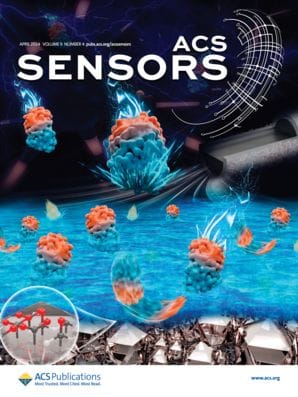After a year or so, lithium-ion batteries—used in cell phones, laptops, and electric cars—need more frequent recharging. And on rare occasions, the batteries can fail catastrophically. A new way to directly image lithium ions could help researchers better understand why these problems happen, helping them to improve battery design. Li-ion batteries can catch fire when […]

After a year or so, lithium-ion batteries—used in cell phones, laptops, and electric cars—need more frequent recharging. And on rare occasions, the batteries can fail catastrophically. A new way to directly image lithium ions could help researchers better understand why these problems happen, helping them to improve battery design.
Li-ion batteries can catch fire when lithium builds up on the anode into sharp spikes called dendrites that pierce the membrane separating the anode from the cathode. But other, less catastrophic failures are also a big problem, says Randall H. Goldsmith, a chemist at the University of Wisconsin, Madison. Over time, such batteries begin to hold less charge, partly because the organic solvents in the electrolyte begin to degrade and deposit on the surfaces inside the battery. As these deposits build up, they bind to lithium, taking these ions out of circulation and reducing the battery’s energy storage capacity. “Lithium is being corralled in places where it can’t be used,” says Goldsmith.
If researchers could follow lithium ions inside a battery, they could better understand and prevent these sorts of problems. But these processes are difficult to study. Imaging methods such as spectroscopy, electron microscopy, neutron scattering, and magnetic resonance imaging don’t provide enough spatial or temporal resolution, or they only indirectly reveal lithium ion movement inside a battery, showing “a ghost or a shadow of what you’re interested in,” Goldsmith says.
He thought that fluorescence microscopy, which can resolve details as small as tens of nanometers and take hundreds of images per second, might be a useful way to directly track lithium ions. He and his colleagues learned of a class of fluorescent organic molecules that bind selectively to lithium ions, but they would need to tweak the molecular structure to absorb visible light rather than ultraviolet light. Just about everything absorbs UV, Goldsmith says. The images would be less noisy if they could make a compound that absorbed in the visible spectrum instead. Goldsmith’s group redesigned the molecule, adding an additional benzene ring to the compound so that it would absorb longer wavelengths. The resulting compound, called 2-(2-hydroxyphenyl)naphthoxazole (HPNO), selectively binds to lithium and can be excited with blue light.
The researchers then created a simple test platform consisting of HPNO and an electrolyte within a microfluidic channel. They injected lithium chloride solutions into the channel at various concentrations and showed that the fluorescence intensity increased with increasing concentration. Then they used the system to image the diffusion of lithium through the electrolyte.
Chongmin Wang, a materials scientist at the Pacific Northwest National Laboratory who develops methods for tracking chemical dynamics inside batteries, says this is the first method he’s seen for directly tracking lithium distribution and migration. That’s interesting, he says. But he’d like to see tests in a full battery before he’ll be convinced that the method will be useful. Wang suspects that the large organic molecule could alter the speed of the lithium ions or prevent them from entering battery electrodes as they normally do.
To do further studies on the imaging method with the fluorescence microscope, Goldsmith’s group is designing a test battery that’s transparent on one side.
This article is reproduced with permission from C&EN (© American Chemical Society). The article was first published on August 3, 2017.
